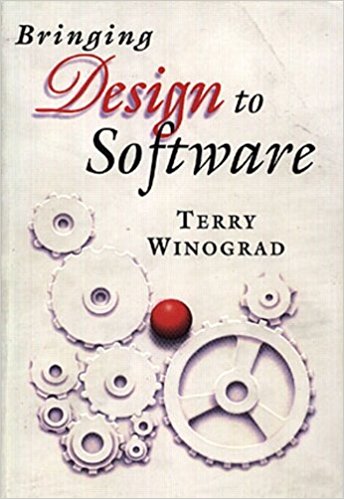
Bringing Design to Software
Shows how to improve the practice of software design, by applying lessons from other areas of design to the creation of software. Contains essays by prominent software and design professionals, interviews, and profiles of successful projects and products.
Tag(s): Software Engineering
Publication date: 12 Apr 1996
ISBN-10: 0201854910
ISBN-13: 9780201854916
Paperback: 352 pages
Views: 31,969
Bringing Design to Software
 Shows how to improve the practice of software design, by applying lessons from other areas of design to the creation of software. Contains essays by prominent software and design professionals, interviews, and profiles of successful projects and products.
Shows how to improve the practice of software design, by applying lessons from other areas of design to the creation of software. Contains essays by prominent software and design professionals, interviews, and profiles of successful projects and products.
Publication date: 12 Apr 1996
ISBN-10: 0201854910
ISBN-13: 9780201854916
Paperback: 352 pages
Views: 31,969
Document Type: Book
Publisher: Addison-Wesley
License: n/a
Post time: 02 Nov 2006 09:12:02
The book's URL has been moved to http://hci.stanford.edu/publications/bds/. The download link has been updated.
Book Description:
This book shows how to improve the practice of software design, by applying lessons from other areas of design to the creation of software. The goal is to create software that works -- really works -- in being appropriate and effective for people who live in the world that the software creates.
The book contains essays contributed by prominent software and design professionals, interviews with experts, and profiles of successful projects and products. These elements are woven together to illuminate what design is, to identify the common core of practices in every design field, and to show how software builders can apply these common practices to produce software that is more effective, more appropriate, and more satisfying for users.
The initial chapters view software from the user's perspective, featuring the insights of experienced software designers and developers, including Mitch Kapor, David Liddle, John Rheinfrank, Peter Denning, and John Seely Brown. Subsequent chapters turn to the designer and the design process, with contributions from designers and design experts, including David Kelley, Donald Schön, and Donald Norman. Profiles discussing Mosaic, Quicken, Macintosh Interface Guidelines, Microsoft Bob, and other successful applications and projects (ed: this book was published in 1996) are included to highlight key points in the chapters.
This book is for the broad community of people who conceive, develop, market, evaluate, and use software. It is foremost, of course, for the software designer, and particularly for the reflective designer -- someone who is driven by practical concerns, but who is also able to step back for a moment and reflect on what works, what doesn't work, and why. At the same time, it reveals new directions and new possibilities for programmers who build software, and for product managers who bring software to market. Software users will also find the book valuable in expanding their understanding of what good software design encompasses, which will help them in evaluating, integrating, and productively using computer applications.
Review(s):
Amazon.com
:) "This is a good thought-starter for anyone interested in broadening their definition of designer and incorporating additional perspectives into their design practices."
:) "Bringing Design to Software attempts to provide a way of looking at the interaction between the users and their world from a software design perspective and should be read by anyone seeking to enhance their ability to design software or to better understand software design considerations."
:) "Chapter 8 and the subsequent profile on IDEO should be required reading for anyone assigned to a software design project. And everyone involved in human-computer interaction should read Kapor's, "A Software Design Manifesto" (which is Chapter 1)."
Tweet
About The Author(s)
Terry Winograd is Professor Emeritus of Computer Science at Stanford University. Professor Winograd's focus is on human-computer interaction design and the design of technologies for development. He founded and directed the teaching programs and HCI research in the Stanford Human-Computer Interaction Group, which recently celebrated it's 20th anniversary. He was a founding faculty member of the Hasso Plattner Institute of Design at Stanford (the "d.school") and on the faculty of the Center on Democracy, Development, and the Rule of Law (CDDRL)

Terry Winograd is Professor Emeritus of Computer Science at Stanford University. Professor Winograd's focus is on human-computer interaction design and the design of technologies for development. He founded and directed the teaching programs and HCI research in the Stanford Human-Computer Interaction Group, which recently celebrated it's 20th anniversary. He was a founding faculty member of the Hasso Plattner Institute of Design at Stanford (the "d.school") and on the faculty of the Center on Democracy, Development, and the Rule of Law (CDDRL)